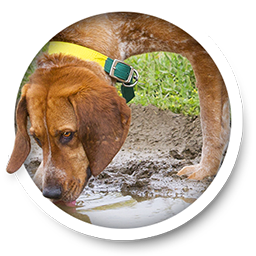

Think You Are Seeing Spots, Blind Spots I Mean, Hi it is Cayenne with my weekly education blog and today it's all about blind spots!
Blind spotsmay be a good thing when it comes to a spouse’s annoying habits, but when driving an automobile in Los Altos, they are definitely to be avoided. So, while it’s not good marital advice, it’s good auto advice to minimize your own blind spots and stay out of other Los Altos motorists' blind spots, especially when it comes to large, heavy vehicles like trucks and buses.
First, minimize your own blind spots. Do this before you pull out of the driveway or parking space. Adjust your rearview mirror so that you see as much of the area behind you as possible. And, no, this doesn’t include the passengers in the back seat. The rearview mirror isn’t designed to be a baby monitor.
Next, lean to the side until your head almost touches the driver’s side window. Now adjust the driver’s side mirror so that it just catches the side of the sedan. Then, lean to the middle of the car and adjust the passenger’s side mirror in the same way. These adjustments will ensure you the widest possible view behind your vehicle.
Of course, you can’t eliminate blind spots entirely. There is always an area behind any vehicle where the driver just can’t see what’s there. The bigger the vehicle, the bigger the blind spot. Toddlers are just the right size to hide in a pickup’s or SUV’s blind spot. The blind spot on an RV or tractor-trailer can actually hide your crossover! You should always check behind any vehicle before getting in and backing up. And if you sit in the sedan for a few minutes before backing up, it is essential to get out and check again, especially if you are pulling out of a neighborhood driveway in Los Altos. No precaution is too extreme if it saves the life of a child.
Once you have taken care of your own blind spots, be aware that other Los Altos auto owners have them, too. And avoid them. Trucks and buses have large blind spots, and they have blind spots on all four sides, so they should always be given extra room on Mt. View roads. They are also heavy, which means they need more room to stop, and their length means they need a wider area for turns, and their large size makes them less maneuverable than a car.
Trucks may cause about 60% of the accidents involving a truck and a car, but 78% of fatalities in such accidents are with the smaller vehicle. The number of fatalities in CA, as well as the number of crashes, could be cut significantly if Los Altos drivers learned to properly share CA roads with trucks.
Never follow a truck too closely. If you can’t see the driver’s face in his side mirror, then he can’t see you. If you need to pass a truck, it is vital to make sure you give yourself enough time to pass the rig. Wait for the right opportunity rather than “cutting it close.” On a two-lane CA highway, it’s always a good idea to wait for a passing zone if they are available. A little patience could save your life or the lives of others. Turn on your turn signal so the truck knows what you’re planning, and pass on the left whenever possible. Remember those blind spots? They are much larger on the right side of a truck.
Once you’ve committed to passing the truck, don’t muck about. Pass it quickly and give yourself plenty of room to move back over. It is critical to wait until you can see both headlights in your rearview mirror before pulling back in front of the truck. Once again, use your sedan turn signals. After you pull in front of the truck, decelerate to the regulated driving speed slowly. Remember that the truck has a long stopping distance, which translates into a long slowing distance. And, since trucks are so big, we often perceive them as traveling more slowly than they really are. Trucks are a lot of weight moving at a high speed, and we need to treat them accordingly.
Never pull to the right of a truck at an intersection unless you are absolutely certain it is not going to turn. Check if its turn signals are on or if it has angled to the left or right. (Trucks often begin a right turn by angling to the left to widen their turning area.) Trucks need a lot of room on city streets, and they probably can’t see you if you pull along their right side. Too many cars have ended up in Los Altos body shops because the motorists thought they could beat that truck to the right turn, or they only noticed the seemingly open lane, and not the truck angling into a turn.
While learning to share Los Altos area roads and highways with trucks and other large vehicles may not seem like preventive auto maintenance, it does, in fact, go hand-in-hand with good Los Altos car care. Keeping your sedan out of the body shop can save you big bucks and prevent the stress of a major accident, along with the injuries that could come with it.
Cayenne and the team at Allied Auto Works in Los Altos urges you to stay safe, and stay on the road!
I will see you next time,
Cayenne